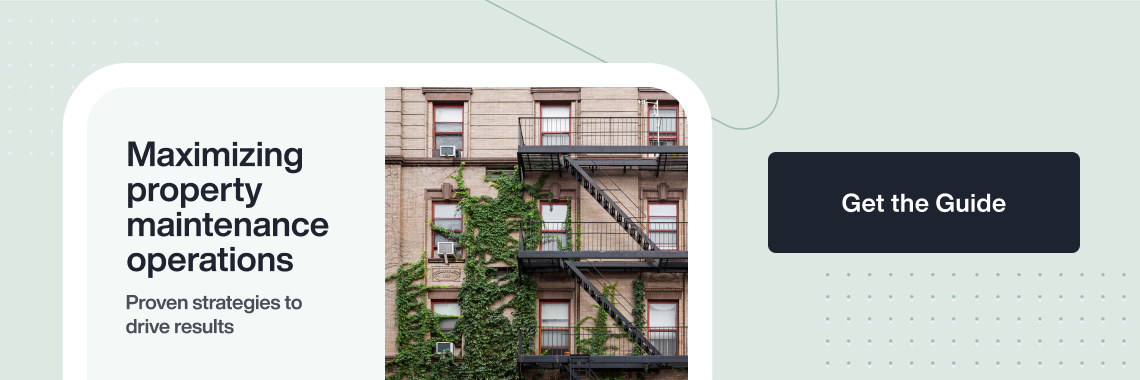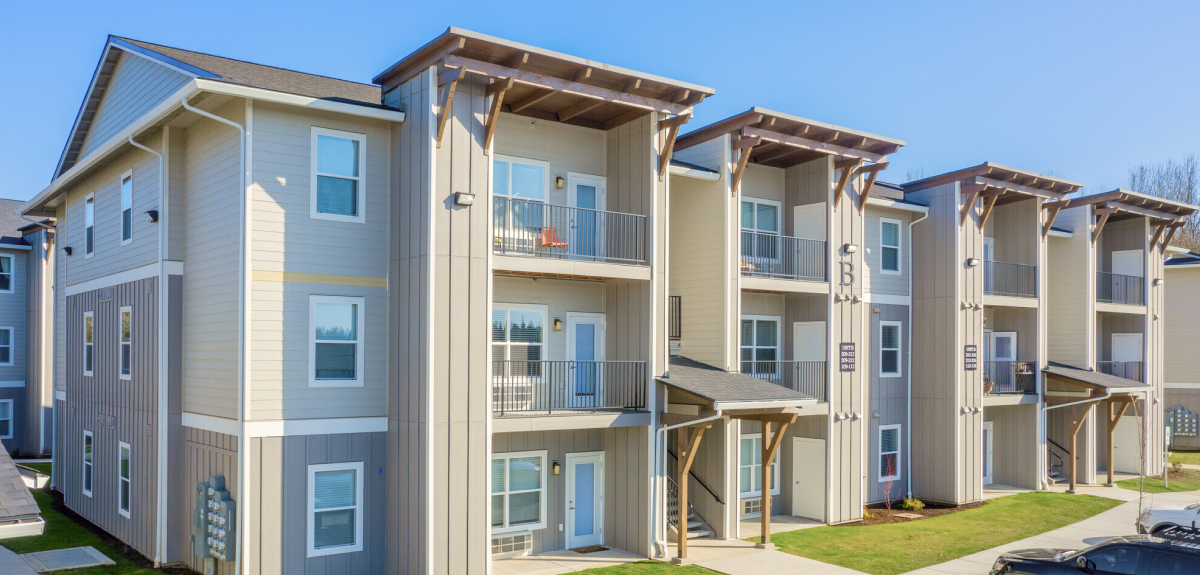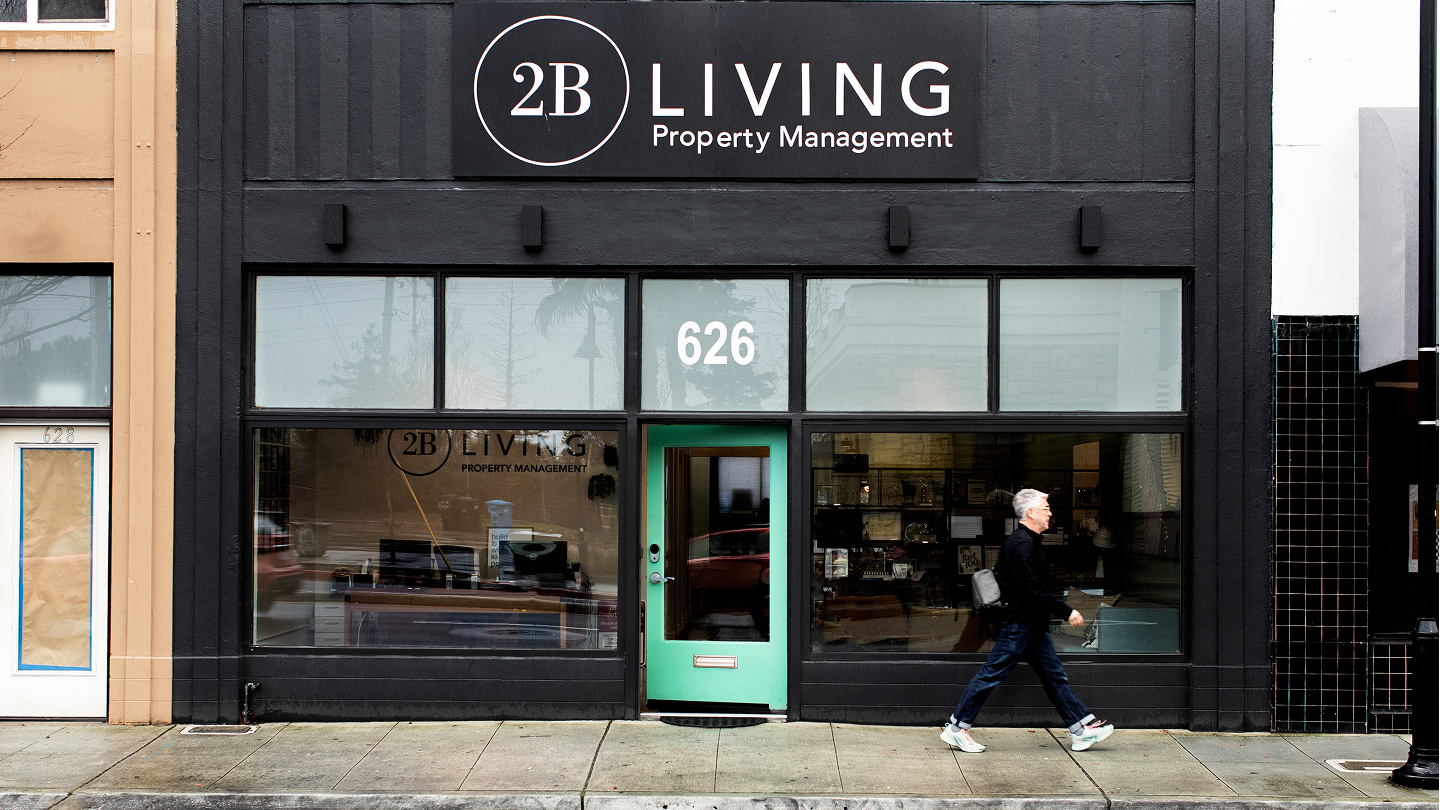Published on June 20th, 2023
By Rae Parker
Property maintenance is one of the largest, most difficult-to-control hard costs for your business, and when managed by outdated and inefficient processes, your revenue and NOI can be seriously affected. Fortunately, by simply addressing some of the most common maintenance challenges, you can not only improve overall operations but also positively impact business outcomes.
Below, we highlight the key property maintenance areas businesses should prioritize for immediate results.
Understand how maintenance and utilities can affect NOI
Although it can be difficult to tie a specific number from maintenance and utility costs to NOI, you can start analyzing major costs or efforts that can affect your bottom line. Be sure to look at the following:
- Insufficient policies, procedures, and training: These three elements form a strategic maintenance foundation that can ensure everyone knows what to do, when to do it, and how to do it. Without these pieces in place, inefficiencies can quickly add up, draining both budgets and bandwidth.
- Excess emergency service requests: While some emergency service calls are to be expected, an excess amount can take teams away from regular maintenance tasks, resulting in a cycle that creates more emergency service needs later. In addition, emergency service calls can take an undesired mental toll on team members.
- Unsatisfied residents: When residents are dissatisfied with their property management, they’re more likely to move out. Higher rates of move-outs also mean additional team time and hard costs spent conducting inspections and unit turns, leading to longer unit turnover times and increased occupancy delays.
- Improper maintenance staffing: Hiring and retention have always been challenges for property management maintenance teams, but overloading existing team members with consistently heavy workloads can lead to burnout and greater employee churn.
- Lack of energy-efficient upgrades: While purchasing energy-efficient upgrades such as smart thermostats and brand-new appliances can feel counterintuitive to achieving short-term budgeting goals, they can pay off big time in the long run. With the cost of utilities rising sharply over the last few years, prospective and current residents are looking for new in-home technologies that save money.
Tap into maintenance teams and technology
Instead of solving maintenance operations issues only as they arise, be proactive and take the time to look for opportunities to improve now. It’s not always easy to rethink how you operate, but maintenance is the heart of every property, and operations impact everything.
To maximize your maintenance operations, you have to tap in to the people who are working within them: your maintenance team. Because these staff members are usually focused on doing their best work, they may not realize they can bring about company-wide change through their day-to-day tasks. That’s why the team at Grace Hill suggests sitting down with maintenance team members and explaining that everything they do daily impacts the community and finances.
Grace Hill — a premier provider of technology-enabled solutions that help owners and operators of real estate properties increase property performance, reduce operating risk, and grow top talent — recommends this step as a way not only to protect the business but also to support the maintenance team’s bandwidth, resources, and workload.
In addition to talking to team members and hearing what’s happening on-site with maintenance, having utility management software in place can provide an additional layer of control. With hard numbers and real-time data, you can better understand the costs associated with utilities, such as monitoring usage spikes and getting weekly tracking reports for more accurate budgeting and forecasting.
Optimize three key maintenance areas to make a big impact
1.) Control hard costs with a procurement strategy
Procurement strategies provide frameworks for more accountability when managing spending, ensuring compliance, and consolidating pricing with pre-approved lists of suppliers and vendors. It also prevents one-off purchases and optimizes team time by having the right items for their jobs on hand when they need them.
Procurement strategy tips
We asked the AppFolio community for their best procurement strategy tips. Here are a few top tips from property management professionals:
- Only order what you need: This is especially true for appliances and higher-priced items. Additionally, order ahead only when items you use regularly are consistently on backorder.
- Budget by looking at historical costs: Start by looking at your typical spend, then add or remove any anticipated changes. This goes for both monthly and yearly planning.
- Align budgets with actual expenses: Get into the habit of comparing your budget with actual expenses at the end of each month. The same applies when looking at annual budgets.
- Dig into data: Ask pointed questions to better understand how underspending or overspending happened, such as “Where did we spend less than anticipated?” and “Where can we save to make up for overspending?”
2.) Conduct inspections regularly to prevent unexpected costs
Move-in and move-out inspections are standard practice in the multifamily housing industry. But routine inspections across your entire property are vital for catching and preventing safety issues and mitigating unexpected costs. For example, it’s unquestionably better to address water drainage issues around buildings before they lead to structural integrity complications and pest problems.
Property inspection tips
In addition to asking about procurement strategies, we also asked the AppFolio community for their top property inspection tips. Here’s what they had to say:
- Use inspections to help with budgeting: Take inventory of what’s needed and look at post-inspection purchases to better budget for ongoing maintenance needs.
- Conduct weekly inspections on vacant units: If no one checks on a unit, a lot can go undetected. Perform weekly inspections to keep units in peak condition.
3.) Turn units quickly and efficiently
Unit turns can be a sizable operational expense and may range anywhere from $1,000 to $5,000 per unit according to the National Apartment Association (NAA). However, using a digital unit turn board can help streamline operations by managing tasks and showing where the most time and money are being spent, enabling you to minimize costs and limit the amount of time a unit is left vacant.
Unit turn tips
The AppFolio community also has plenty of insights on why turning apartments quickly and efficiently is vital. Here are a few recommendations:
- Stagger move-ins and move-outs: Help teams better balance unit turns and manage their time by staggering the move-in and move-out schedule.
- Lean into team strengths: Not all maintenance team members are going to be good at turning every part of a unit. Help team members work faster and more efficiently by assigning tasks for which they’re best suited.
- Minimize vacancy time: The longer a unit is vacant, the more utility costs the property has to take on, and the less income is recognized.
- Set expectations with vendors: Overpaying for vendors who underdeliver will only lead to frustration throughout your teams. Instead, make sure everyone is on the same page by setting — and agreeing to — expectations upfront.
Having the proper procedures, processes, people, and technology in place will make a huge difference in terms of how smoothly your daily maintenance operations can run. The more optimized your maintenance operations are, the better the outcomes will be for your team members, your residents, and your business.
Download the free guide below for more strategies to maximize your maintenance operations.









Comments by Rae Parker